Repair cycle time and length of rental have seen steady increases over the last several years. Within the industry the primary explanation used to explain these increases is growth in vehicle and repair complexity; which preliminary comparison of vehicle repair cost to cycle time would seem to bear out. For example, in Crash Course 2018, vehicle in to vehicle out average days increases as repair costs rise – repair time increases nearly two full days with every $1000 increase in repair cost (see Figure 1).
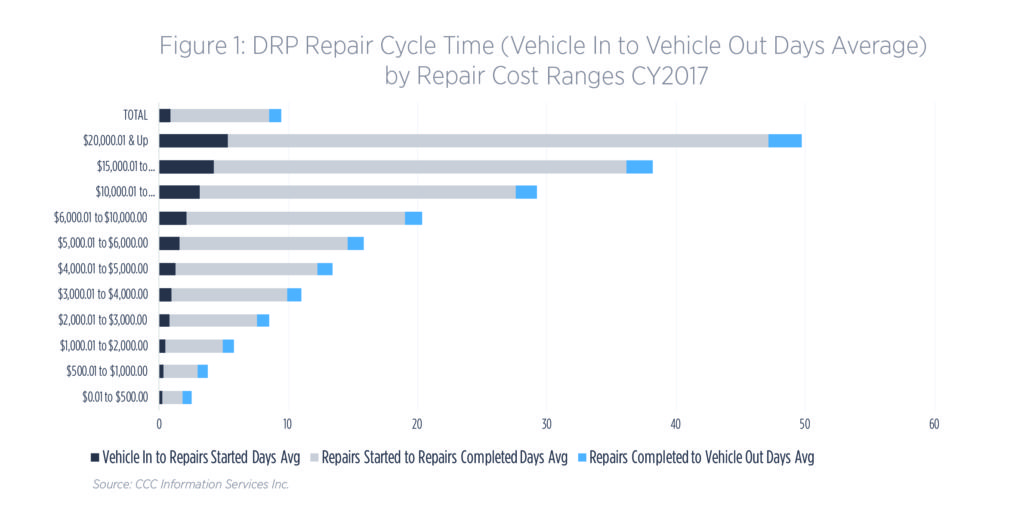
A comparison of DRP repairs from Q2-2017 to Q1-2018 at an individual state level however reveals the states with the highest average repair costs don’t necessarily have the longest repair times. Figure 4 shows the individual state’s average DRP repaired vehicle cost indexed to the national average DRP repaired vehicle cost of $3,160, and the individual state’s average days from repair start to repair complete. For example, Wyoming’s repair cost index is among the highest at 128, yet its average repair time was only 7.8 days versus Colorado’s repair cost index of 116 and average repair days of 10.7 days. Labor costs differences among the states likely drive some of the difference in repair costs, but other factors beyond that certainly drive the differences in repair times.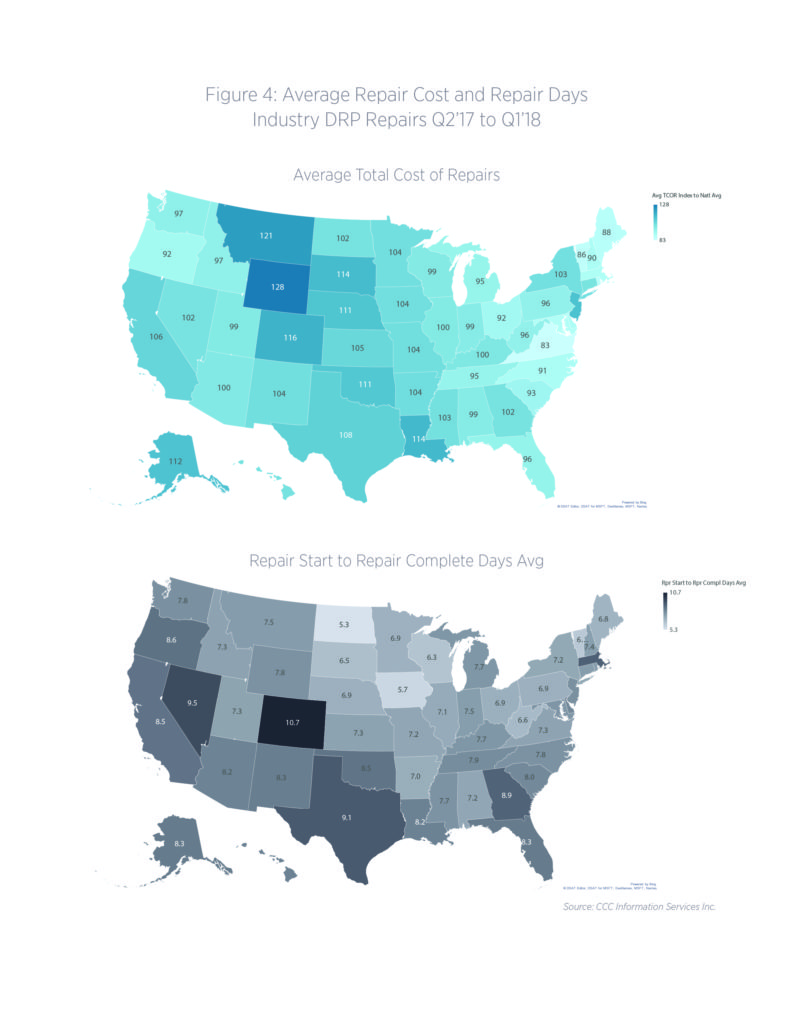 Prior analysis has shown that newer and more expensive vehicles tend to have longer repairs times, and non-driveable repairs also take longer to repair than driveable, so wide variation among those variables could potentially explain the variation in repair times across the U.S. For example, a comparison by state of a combined value of the index of the loss vehicle’s value (where the loss vehicle value or ACV is essentially would be higher for newer, higher end cars and trucks) to the national average and the state’s non-driveable percent in Figure 5 also suggest some correlation of vehicle mix to longer repair times, but not across the board.
Prior analysis has shown that newer and more expensive vehicles tend to have longer repairs times, and non-driveable repairs also take longer to repair than driveable, so wide variation among those variables could potentially explain the variation in repair times across the U.S. For example, a comparison by state of a combined value of the index of the loss vehicle’s value (where the loss vehicle value or ACV is essentially would be higher for newer, higher end cars and trucks) to the national average and the state’s non-driveable percent in Figure 5 also suggest some correlation of vehicle mix to longer repair times, but not across the board.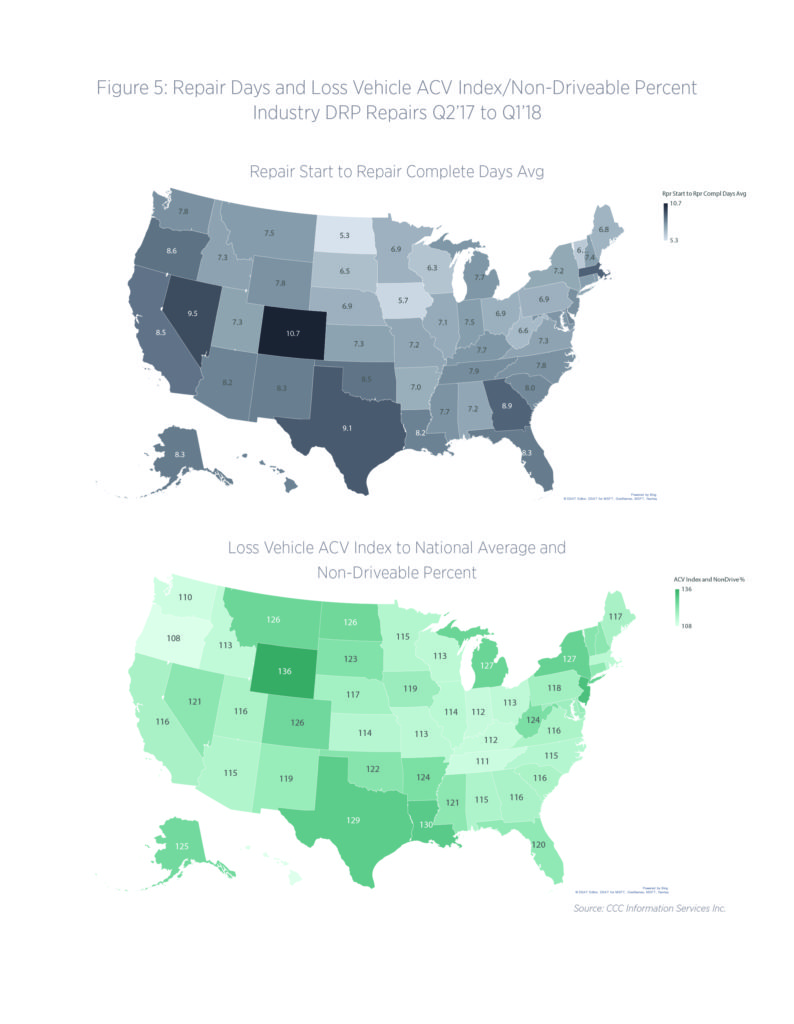
Lastly, repair volumes for collision and liability insurance vehicle losses have historically fluctuated less among states than comprehensive loss volume, which can spike from a large hail storm like those experienced in Denver in May 2017 and Texas in the spring of 2016. For example, a comparison of comprehensive loss share of overall repair volume by state suggests shop capacity may also be driving repair times – many of the states with larger share of comprehensive losses during the period analyzed have longer repair times (see Figure 6); but not in every case. Each of these comparisons illustrate the importance of understanding regional differences and how that might impact national results, particularly for operators and insurers with a broad multi-state footprint.
 A key driver of additional repair complexity has been the growth in electronic vehicle content – items added to address vehicle safety or convenience also add to the overall cost and complexity of repair and the need to understand the appropriate repair procedures. Not only are more parts per claim required, but additional labor not included in the labor for part replacement, is needed for calibration, reset and scan operations (see Figure 7).
A key driver of additional repair complexity has been the growth in electronic vehicle content – items added to address vehicle safety or convenience also add to the overall cost and complexity of repair and the need to understand the appropriate repair procedures. Not only are more parts per claim required, but additional labor not included in the labor for part replacement, is needed for calibration, reset and scan operations (see Figure 7).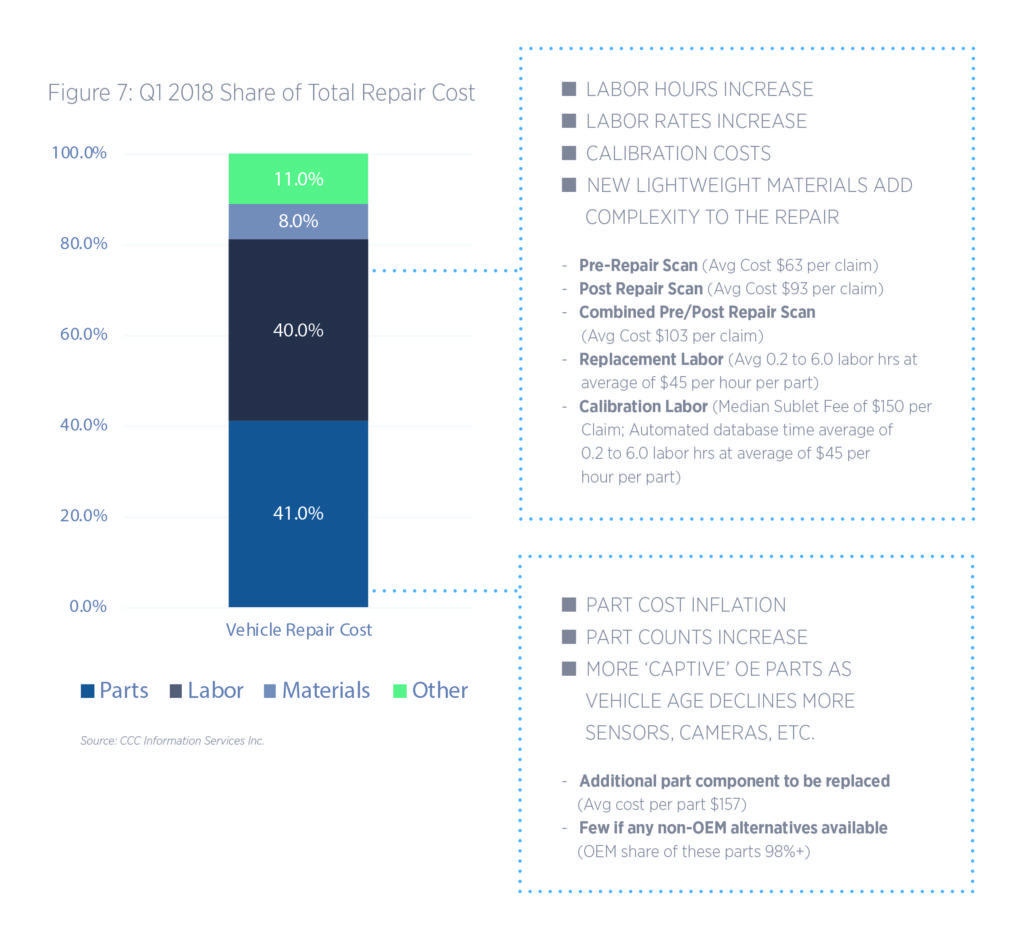 In Q1 2018, approximately 12 percent of all appraisals included any entry denoting a “scan/diagnosis/health check/astec”; a number that has grown from 4 percent in CY 2016 and 9 percent in CY 2017. The number of scans has grown each quarter, and scans are being performed most on newer model year vehicles, as Figure 8 illustrates. (Note, the absence of a scan entry in the appraisal does not necessarily mean that the scan was not performed.) Not surprisingly then the share of DRP repair counts from Q1 2018 skew significantly newer for those repairs that included scan fees, versus the distribution of all DRP repairs by vehicle age (see Figure 9). And yet, even within each age group the repair time for repairs that included a scan was higher than the overall average repair time per vehicle age (see Figure 10), with productivity lower across the board (see Figure 11).
In Q1 2018, approximately 12 percent of all appraisals included any entry denoting a “scan/diagnosis/health check/astec”; a number that has grown from 4 percent in CY 2016 and 9 percent in CY 2017. The number of scans has grown each quarter, and scans are being performed most on newer model year vehicles, as Figure 8 illustrates. (Note, the absence of a scan entry in the appraisal does not necessarily mean that the scan was not performed.) Not surprisingly then the share of DRP repair counts from Q1 2018 skew significantly newer for those repairs that included scan fees, versus the distribution of all DRP repairs by vehicle age (see Figure 9). And yet, even within each age group the repair time for repairs that included a scan was higher than the overall average repair time per vehicle age (see Figure 10), with productivity lower across the board (see Figure 11).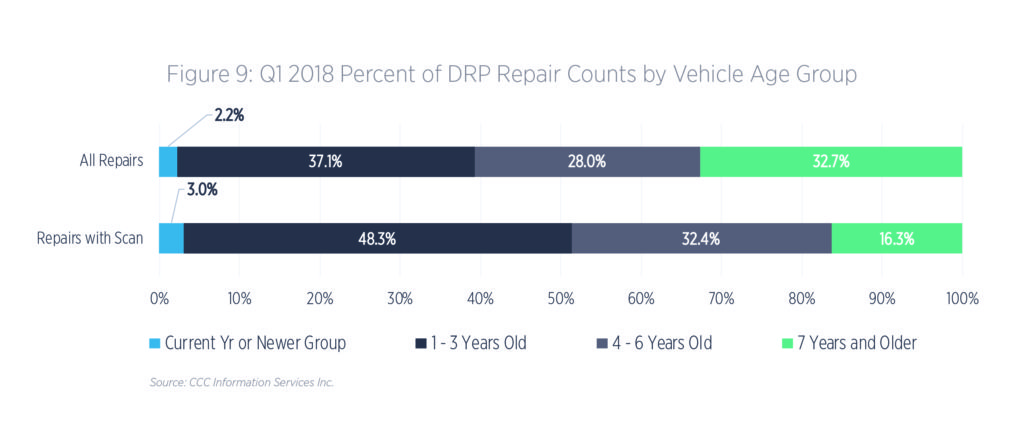
So with growing vehicle and repair complexity are helping pressure repairer productivity and driving up repair cycle time, what can repairers and insurers do to manage this trend? Repair times may continue to grow, but there is potential opportunity to focus on and improve overall claim cycle time. Appraisal review tools can help streamline the communication and estimate review process between repairers and insurers. Data from Q1 2018 comparing claim cycle times among DRP customers that use an electronic review versus those that don’t suggest tools such as these can help reduce the back-and-forth that lead to higher supplement frequency and higher claim cycle times (see Figure 12).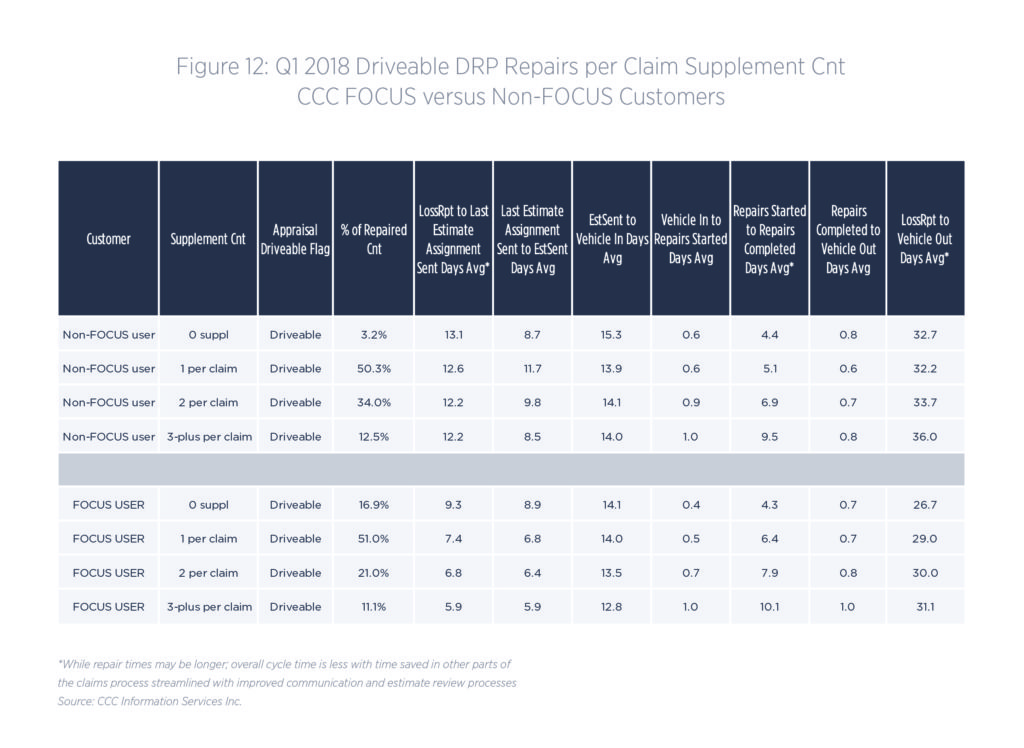
By Susanna Gotsch, director & industry analyst for CCC Information Services Inc.
Was this article valuable?
Here are more articles you may enjoy.

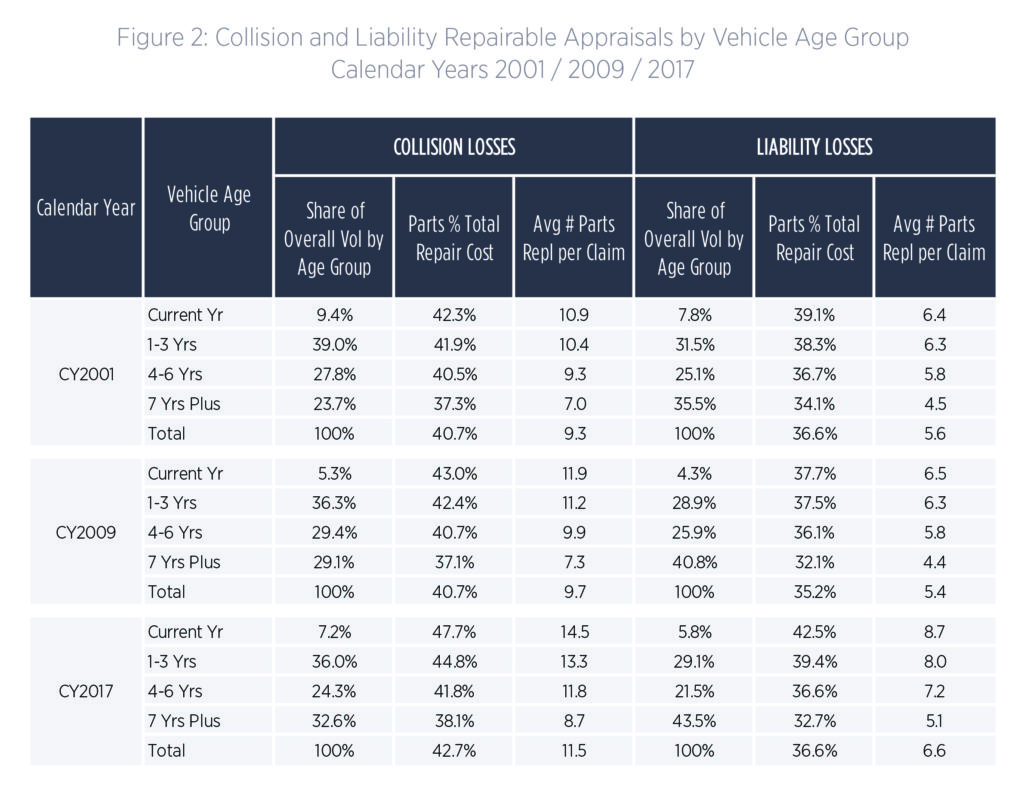
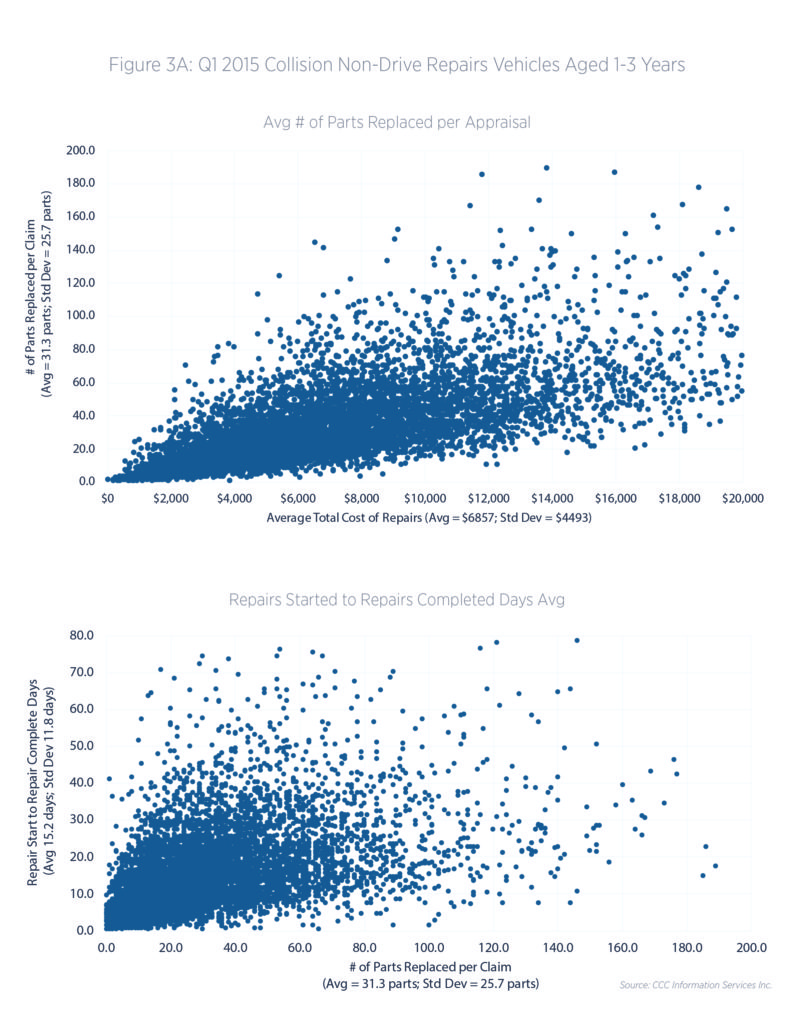
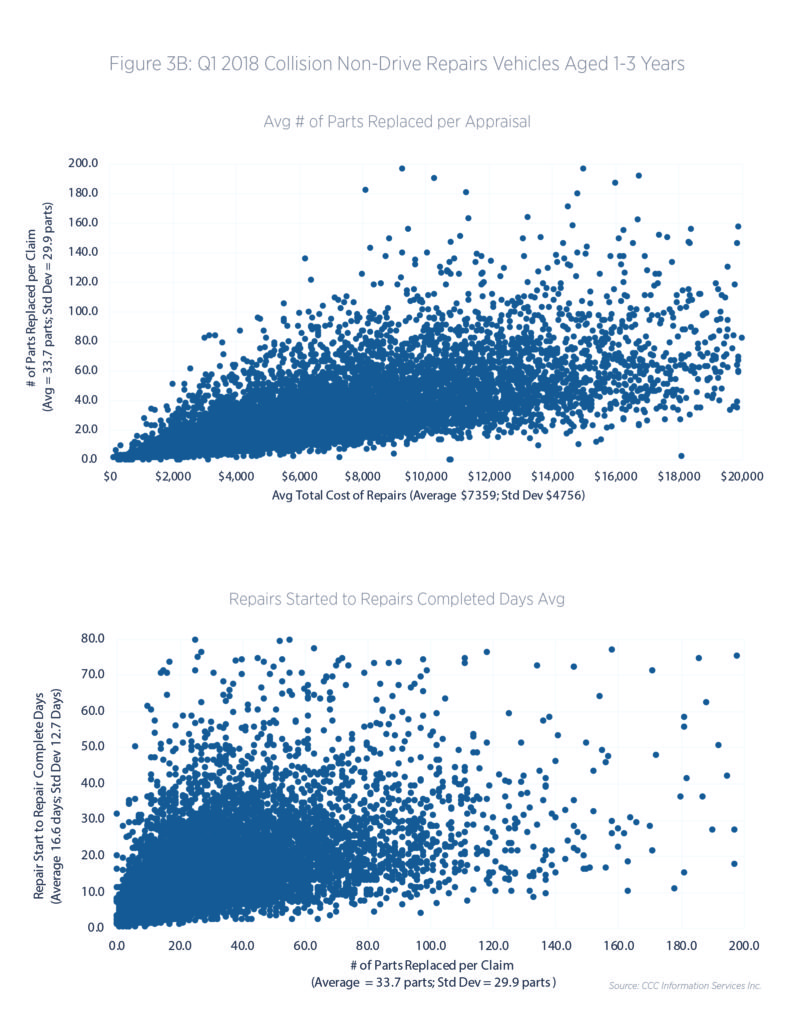
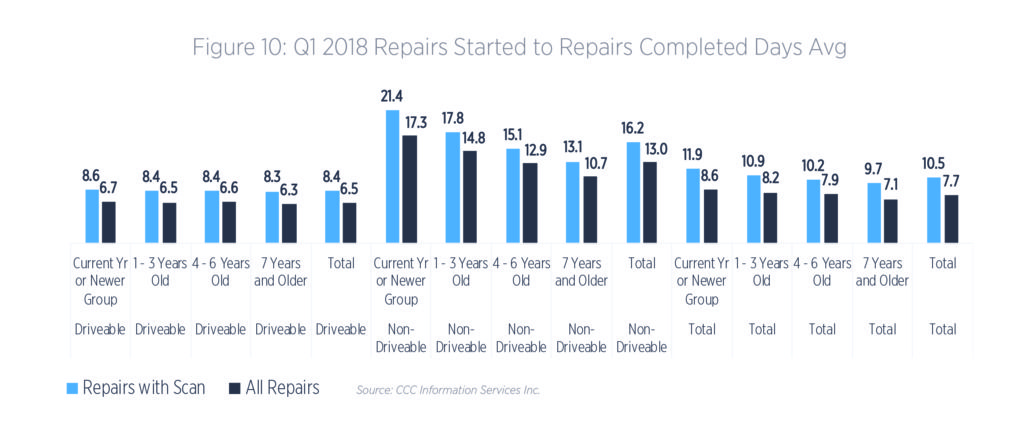

 CBS Poised to Lose Bid to Stop Sony Taking ‘Jeopardy’ Rights
CBS Poised to Lose Bid to Stop Sony Taking ‘Jeopardy’ Rights  AI Weather Models Promise Super Granular, Specialist Forecasts
AI Weather Models Promise Super Granular, Specialist Forecasts  LA Wildfires Had Little Impact on Reinsurer Risk Appetite During April Renewals
LA Wildfires Had Little Impact on Reinsurer Risk Appetite During April Renewals  More Resilient Organizations Successfully Battled Ransomware in 2024: BakerHostetler
More Resilient Organizations Successfully Battled Ransomware in 2024: BakerHostetler 